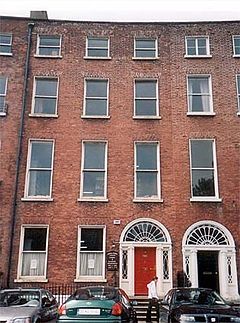The Central Catholic Library has found itself in the news headlines. Many people, especially those outside Dublin, may like to learn a little more about this venerable institution, its history, and the difficulties it faces today.
The Central Catholic Library was founded in January 1922 — so it is actually as old as the State itself. Its creator was Fr Stephen Brown SJ, the distinguished bibliographer who established the library studies department at UCD.
He wanted a library which would serve the needs of Catholics of all kinds, from those interested in the life of a favourite saint to the scholar searching for recondite information about the early Church.
His scheme for arranging the library was so generous that it covered not only Scripture, the Church, theology and many religious topics, but also history, science, music, the arts, Irish culture, sociology — some 31 broad areas under which the books were catalogued.
From the beginning the library was run as an association. Now a company, it has been a registered charity since 1926.
Despite all the difficulties that can be imagined in starting such a library in the impoverished years of the Free State, the library got off its feet. From one room in Westmoreland Street it moved to rooms in Harcourt Street. It was driven from there by a fire in 1932; but with a renewed collection and fresh impetus it moved on to Merrion Square, then the heart of public life in Dublin, surrounded by government offices and foreign embassies. There it came to occupy two houses by the time of the Emergency.
Research
In 1946/47, the year of the library’s jubilee, it was recorded that some 15,293 people attended the Reading Room in the Library, where reference and research books were kept. Some 19,274 visits were paid to the News Room, where newspapers and magazines were kept. Large number of paid members also used the Lending Department.
These were impressive figures. But they were deceptive. For despite this heavy use, largely by students from UCD, then in Earlsfort Terrace, the library was never free of financial difficulties. But goodwill and friendly co-operation in a common cause kept the library active during the life of Fr Stephen Brown.
In the early 1960s, after he died, things became more difficult. Numbers began to fall, as people moved out of the city, changed their social habits, and — after Vatican II — adopted new attitudes to religion and faith. Numbers using the library began to fall, more and more steeply in the last two decades.
The library, of course, shared the same troubles that have affected the Church at large, and the religious orders. People grew used to the idea that the State would provide libraries. Or the Church. In the case of the Catholic Library the public at large, when they heard of the Catholic library, assumed that it was run and paid for by the dioceses. This was never the case.
Eventually one of the houses on Merrion Square was sold to provide a reserve fund, which it was hoped would provide a revenue stream. So it did, a small one, when interest rates were high. But not anymore.
Usage dropped, membership evaporated, costs on all sides rose. The employment of a professional librarian, an essential aspect of running a library today, and the increasing costs of maintaining a house built at the end of the 18th century… the mounting troubles are easy to imagine.
It now has a little over 200 members, and very few readers or users. Most of those who make use of its resources these days are postgraduate students or academic researchers. The well-informed Catholic of days gone by has become increasingly rare.
Over the decades suggestions were made, by Archbishop Ryan and others, that the library should take great care of its most valuable assets, the books. He proposed making them part of the diocesan library. But nothing came of that. Contacts for some kind of association were made with many bodies and institutions. But came to nothing.
More recently the board agreed to a renewed effort in the search for a partner. Eventually an institution proposed a plan to work on with the library’s Board, which would preserve the house in Merrion Square, conserve the library and the long runs of journals (some 700 titles going back to 1814) as befitted the collection of such age and vulnerability.
This offer, which seems to some members of the Board to be quite providential, and in line with the library’s longtime associations with higher learning, is not finalised though.
Some books would be retained at Merion Square, perhaps the more popular books of recent times, and the refurbished house would provide a better venue for lectures, seminars and other events in safety — which cannot now be done in a building crowded with books to overflowing.
The library celebrates its centenary in 2022. With the collections preserved, the name retained, and with complete public access – and proper parking — in its new home it would have every prospect of thriving, relieved of a heavy burden of anxiety and financial worries.
This great historical collection cannot now be properly cared for where it is. And though the apostolic mission of the library intended by Fr Brown will continue, it will continue in ways that reflect how the Church has to work these days, not by opposing the generality of society, but as an active agent for all kinds of in a changing society through influencing the opinions of young people and academics where they are most active – in one of our great seats of learning, the heirs to the famous seats of learning in Early Christian Ireland.


 Peter Costello
Peter Costello